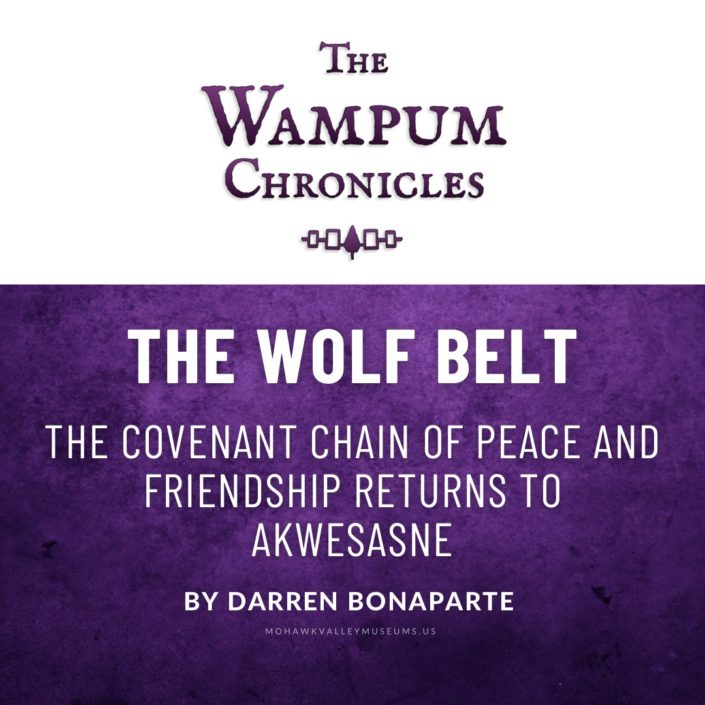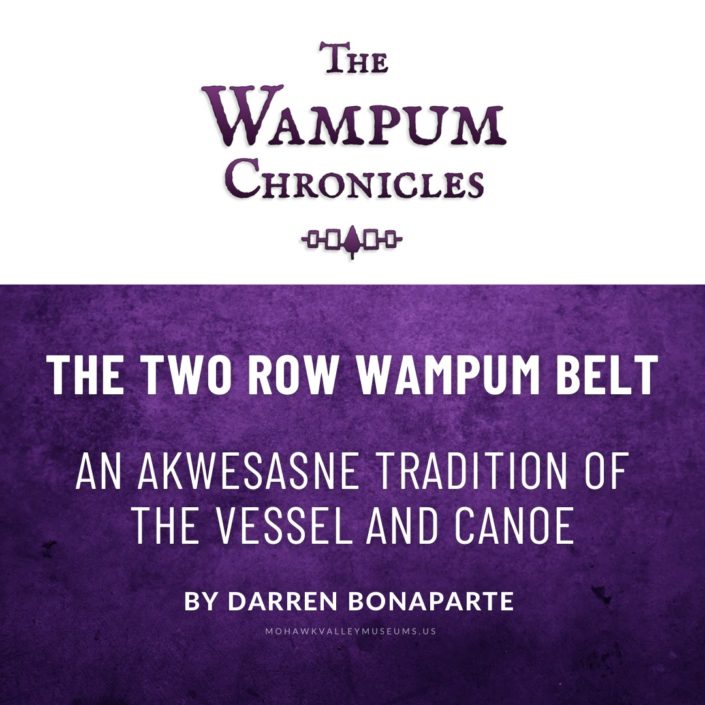
Mohawks Know the Dark Side of Bridges
(Originally published in The People’s Voice, May 20, 2005)
Written by Darren Bonaparte
They’re long gone now, but there were once two railway bridges connecting Cornwall Island to the American and Canadian mainland. The Ottawa & New York Railway Bridge, as the two spans were collectively known, seemed to have a curse on it right from the beginning.
First the south span of the O&NY Railway Bridge collapsed in October of 1898, killing 15 workers and seriously injuring sixteen. In June of 1908, part of the north span gave way. This happened less than a year after the infamous Quebec Bridge Disaster of August, 1907, in which 73 ironworkers–33 from Kahnawake–met a horrible end when the bridge they were working on suddenly failed and plunged into the waters of the St. Lawrence River.
Sometimes just crossing a bridge can be dangerous, as one Akwesasne family found out in 1915. We find their story in the files of the Department of Indian Affairs, in the form of a letter by the Indian Agent to his superiors in Ottawa.
I have to inform you on behalf of Mitchell Oak, a member of the St. Regis band of Indians #417 on the paylist, of the fact that on Monday evening April 5th, instant, between the hours of seven and eight his daughter Cecile, aged 10 years, was shot by one of the guards on duty at Cornwall Isle, protecting the Canadian portion of the New York and Ottawa bridge…
…It would appear that Mrs. Oak accompanied by her two daughters, Cecile aged about 10 years, and Margaret aged about 12 years, were returning to their home at Cornwall, Ont. From the St. Regis village by way of Cornwall Island, and as they intended to walk across the bridge, when it is alleged that one of the guards without asking them to halt, fired at them twice, the first shot going wild but the second shot striking this poor innocent and harmless child in the front portion of the left leg about 4” below the thigh bone.
After the shooting, the girl was immediately taken to the General Hospital by one of the guards, John Semo, Richard Semo and several others. The bullet has been extracted and the girl is resting as well as can be expected under the circumstances.
It is stated that they were not challenged by the guard and that the only intimation of danger was the firing in quick succession of two shots. It would seem that the guard should have, after firing the first shot, endeavoured to stop them before firing the second. At the time of the shooting there were not any guards on the bridge nor track, and here I may add that these guards had just arrived that evening and were just arranging their camp when the shooting occurred.
The guard who shot the girl was in the ditch, or at least on the side of the track and the bridge was between him and the girl. It may also state that these children do not speak English.
For years it has been customary for the Indians to cross and recross this bridge, in fact it has been always considered as a public highway and has on either side of track a sidewalk protected on one side by wire. Again last summer until this bridge was guarded the Indians were always allowed the use of said bridge.
The Indians were not aware of any guards being placed to protect this bridge as no warning had been issued, nor posters placed in position as had previously been done.
There were 12 guards present when the shooting occurred and does it not seem that they could easily have stopped this poor harmless woman and two young innocent children without maiming one and causing her days and nights of suffering?
The Indian agent, F. E. Taillon, requested that an inquest be called, and that the guard be punished if found guilty of a crime. He also asked that damages and hospital bills should be paid on behalf of the family, which had five other kids besides Cecile (also known as Sarah) and Margaret. Nancy Oak, the mother of the children, was the first to testify when the military board of enquiry was held 4 days after the shooting.
On Monday night about 7.30 P.M. 5/4/15 I was returning from Cornwall Island (St. Regis Church) with my two daughters Maggie aged 12 years and Sarah aged 10 years and my baby in my arms.
When about 3 acres South side of N.Y.O. Railway Bridge, I heard two shots. The last struck my little girl, she began to cry. She was struck on thigh of left leg, Sarah 10 years old.
The Soldiers were yelling, and I said wait a minute. They asked if anyone was hurt, I said yes, my little girl. The soldiers then took my little girl across, and sent for Dr. Monroe and she was taken to General Hospital. Sarah was wheeling the baby carriage I asked her if she heard anybody yelling she said No.
I had a white hat on my head.
Major Hugh A. Cameron testified that he had just inspected the guards and was returning to his quarters when
…I heard a sentry challenge somebody saying loudly and distinctly, “Halt! Who comes there, three times with a pause between each challenge. We immediately retraced our steps, then we next heard the report of a rifle, followed by two other shots.
His account was echoed by several other guards who testified, including the guard who fired the first shot, Private Joseph Tyo:
About 9.15 I heard somebody coming up the track, so I notified the other sentry, I challenged them three times, got no answer, then I fired, and I obeyed orders, they were as near as I could judge sixty yards away, they were still advancing when I fired. Pte. Jarvo fired after me then Col-Sergt yelled Cease Fire, and upon coming up asked what we were shooting at. I told him I heard someone coming up the track, had challenged them three times and got no answer then fired.
Private Charles Jarvo, who fired the shot that hit the girl, echoed the testimony of his comrades almost word for word. Both emphasized how dark it was that night. The Board of Enquiry concluded the hearing by finding
That the said Sarah Oak, while in company with her mother and sister, journeying from St. Regis via Cornwall Island to Cornwall town…was wounded by a bullet, apparently fired by a duly posted sentry, and not complying with the sentry’s order to halt,
We further find that the sentries, in question, performed their duty, as instructed, and under the circumstances were justified in firing upon the suspected intruders.
Duncan Campbell Scott, the Deputy Superintendent General of Indian Affairs, advised the St. Regis Indian agent that in light of the findings, no further action could be taken. He requested that any expense associated with the girl’s hospitalization be forwarded to the department for reimbursement.
In June of that year, the Treasury Board authorized payment of $100 to Sarah Oak, to be issued by the Department of Indian Affairs,
…as compensation in respect to her suffering and any possible ill effects which may result from her injury…
The Department of Indian Affairs’ notorious bureaucracy then kicked in. By the time the check actually reached Mohawk hands in 1921, about six years after the shooting, poor Sarah had healed from her wounds, grown up, gotten married, and died from an undisclosed illness. She never saw a penny of the money meant to alleviate her suffering.
Next in series:The Healing Powers of the Seventh Son of a Seventh Son
By Darren Bonaparte, historian and author of The Wampum Chronicles. Reprinted with permission.
Darren Bonaparte is a cultural historian from the Akwesasne First Nation. He is a frequent lecturer at schools, universities, museums, and historical sites in the United States and Canada. He has written four books, several articles, and the libretto for the McGill Chamber Orchestra’s Aboriginal Visions and Voices. Darren is a former chief of the Mohawk Council of Akwesasne. He is the creator of The Wampum Chronicles and historical advisor to film and television. He currently serves as the Director of the Tribal Historic Preservation Office of the Saint Regis Mohawk Tribe.














 Little Falls Historical Society Museum. Photo by Mohawk Valley Today
Little Falls Historical Society Museum. Photo by Mohawk Valley Today